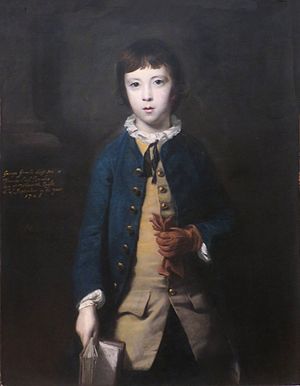
Earl of Warwick is a title that has been created four times in English history and is one of the most prestigious titles in the peerages of the UK.
The Earl of Warwick who would have supported the rebuilding of the church at Leek Wootton in 1790 would have been George Greville, 2nd Earl of Warwick (of the fourth creation). He was born in 1746 and his father was created Earl when he was just 13.

George Greville, later second Earl of Warwick by Joshua Reynolds, Public domain, via Wikimedia Commons
The Royal Register records that,”…a very great and singular attention was paid to the education of this nobleman by his late father, who, fearful of the corruption which disgrace our great seminaries of learning, consigned him to the care of the first historian of the age, to complete his moral as well as political character. From Scotland he returned so well informed, and such an amiable manliness about him, that the most flattering prognostications were made of his future eminence… His travels did not in any great degree either improve or corrupt him, and he has since remained a quiet inoffensive domestic character, little known but by persons of taste and virtue.” Cokayne, and others, The Complete Peerage, volume II, page 337
He went on to become a Fellow of the Royal Society, Fellow of the Society of Antiquiaries and he was Member of Parliament for Warwick between 1768 and 1773.
The title passed from father to son, including the 5th Earl, Francis Greville, whose wife, Daisy, was a long-term confidant or mistress to Albert Edward, Prince of Wales, who later became King Edward VII and was the inspiration behind the popular music hall song Daisy, Daisy.
Their grandson, Charles Guy Fulke Greville, the 7th Earl, was the last to live at the historic seat of Warwick Castle, before it was sold in 1978 by his son (to whom he had handed control to in 1967) to Madame Tussauds.
